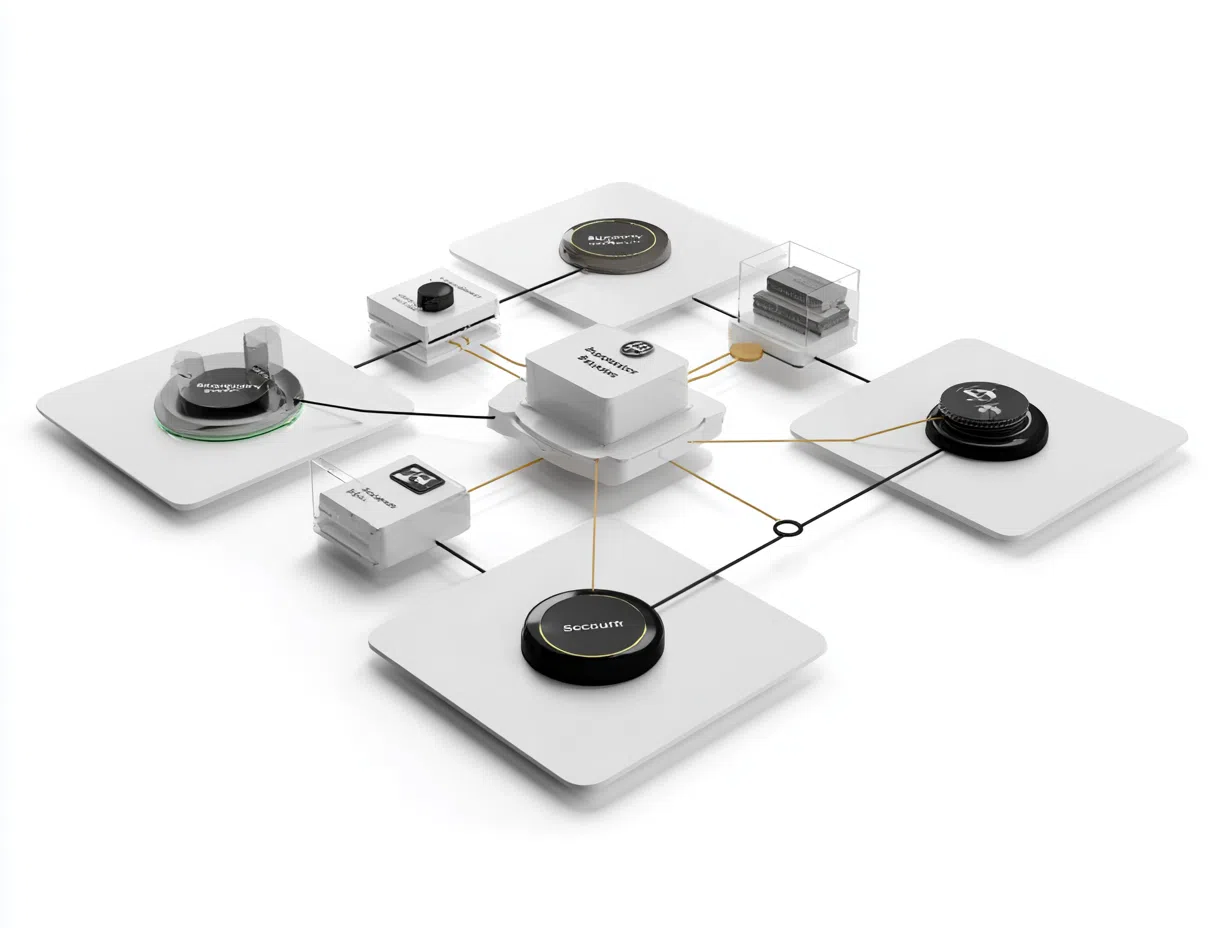Master Network Security for 2025 Digital Defense
Protecting organizational systems and data against an ever-evolving landscape of cyber threats. Learn the essential skills, tools, and strategies that cybersecurity professionals use to secure network infrastructure.
The Critical Role of Network Security
Understanding why network security stands as the foundation of modern cybersecurity infrastructure
In 2025, network security stands as a critical pillar of cybersecurity, safeguarding organizational data and systems against an ever-growing array of cyber threats. With the proliferation of IoT devices, cloud adoption, and AI-driven attacks, securing networks has never been more challenging—or more essential.
According to a 2025 McKinsey report, network breaches account for 45% of all cyberattacks, costing businesses an average of $4.5 million per incident. Network security professionals are at the forefront of this battle, using advanced tools and strategies to protect infrastructure, detect intrusions, and respond to threats in real time.

The demand for network security expertise is surging, with ISC2 reporting a global cybersecurity workforce gap of 4.8 million professionals in 2025. Network security not only prevents data breaches but also ensures compliance with regulations like GDPR.
Essential Network Security Skills
Core competencies every network security professional must master
Firewall Management
Configure and maintain next-generation firewalls to block unauthorized access, manage traffic flow, and implement deep packet inspection. Master both network-based and host-based firewall technologies, including rule optimization and policy management for enterprise environments.
Intrusion Detection & Prevention
Deploy and manage IDS/IPS systems to monitor network traffic for suspicious activity, analyze attack patterns, and automatically respond to threats. Includes signature-based detection, anomaly detection, and behavioral analysis techniques.
Threat Analysis & Intelligence
Analyze security logs, network traffic patterns, and threat intelligence feeds to identify potential security incidents. Develop threat hunting methodologies and create actionable intelligence reports for stakeholders.
Advanced Security Strategies
Modern approaches to network defense and architecture
Network Segmentation
Divide networks into isolated segments to limit attack spread and contain potential breaches. Implement micro-segmentation for granular access control.
Zero Trust Architecture
Verify all users and devices before granting access. Never trust, always verify – implementing continuous authentication and authorization.
Advanced Encryption
Use VPNs, SSL/TLS, and end-to-end encryption to secure data in transit. Implement quantum-resistant encryption for future-proofing.
Essential Security Tools
Industry-standard tools for network monitoring and protection
Wireshark
A comprehensive network protocol analyzer for deep packet inspection and traffic analysis.
Snort
An open-source intrusion detection system for real-time traffic monitoring and threat detection.
pfSense
An open-source firewall and router software providing enterprise-level security features.
Nmap
Network discovery and security auditing tool for vulnerability assessment and network mapping.
Splunk
Security information and event management (SIEM) platform for log analysis and threat hunting.
Nessus
Vulnerability scanner for identifying security weaknesses in network infrastructure and applications.
Implementation Framework
A structured approach to deploying network security measures
Implementing network security involves a comprehensive, structured approach. Here are the five critical steps every organization should follow:
- Risk Assessment: Conduct thorough vulnerability assessments to identify potential weaknesses in your network infrastructure, including outdated systems, misconfigurations, and access control gaps.
- Policy Development: Establish comprehensive security policies covering access controls, incident response procedures, and compliance requirements. Document acceptable use policies and security standards.
- Tool Deployment: Install and configure essential security tools including next-generation firewalls, intrusion detection systems, VPNs, and monitoring solutions. Ensure proper integration and centralized management.
- Continuous Monitoring: Implement 24/7 monitoring of network traffic, system logs, and security events. Use automated threat detection and response capabilities to minimize response times.
- Incident Response: Develop and regularly test incident response plans. Train staff on proper escalation procedures and maintain updated contact lists for emergency response teams.
Career Pathways in Network Security
Diverse opportunities for growth and specialization in the field
Network Security Engineer
Design and implement comprehensive security solutions for enterprise networks. Average salary: $95,000 – $140,000.
Security Operations Analyst
Monitor and respond to security threats in a Security Operations Center (SOC). Average salary: $75,000 – $110,000.
Cybersecurity Architect
Develop enterprise-wide security frameworks and strategic security initiatives. Average salary: $130,000 – $190,000.
Certifications like CompTIA Security+, Cisco’s CCNA Security, and CISSP can significantly enhance your career prospects. Microsoft Learn’s training paths and hands-on lab experiences provide excellent starting points for skill development.
The Future of Network Security
As technology advances, so do cybersecurity threats. The future of network security will likely involve increased automation and the use of artificial intelligence to predict and mitigate attacks. AI can analyze vast amounts of data faster than humans, identifying potential threats in real time and adapting defenses dynamically.
Additionally, the advent of quantum computing necessitates the adoption of quantum-resistant encryption to safeguard against future vulnerabilities. With the rise of remote work, securing endpoints and ensuring robust remote access solutions will be critical.
Organizations should invest in next-generation firewalls and advanced endpoint protection to adapt to these changes. According to a study by Gartner, global security spending is expected to reach $150 billion by 2025, underscoring the urgency of these investments.
Key Future Trends
- AI-Powered Threat Detection: Machine learning algorithms for real-time threat identification
- Quantum-Resistant Cryptography: Preparing for the quantum computing era
- Zero Trust Evolution: Continuous verification and adaptive access controls
- Cloud-Native Security: Security-first approaches to cloud infrastructure
- IoT Security Integration: Securing the expanding Internet of Things ecosystem
Real-World Case Studies
Examining real-world case studies provides valuable lessons in network security implementation and incident response.
Target Data Breach (2013)
The Target data breach resulted from compromised vendor credentials, leading to the theft of 40 million credit card numbers. This incident emphasizes the importance of vendor management and securing third-party access through proper network segmentation and access controls.
Equifax Breach (2017)
A vulnerability in an unpatched web application exposed the data of 147 million people, highlighting the critical need for timely patch management and comprehensive vulnerability assessment programs.
Colonial Pipeline Ransomware (2021)
This attack disrupted fuel supply across the eastern United States, demonstrating the importance of operational technology (OT) security and network isolation between IT and OT environments.
Organizations can learn from such breaches by conducting thorough risk assessments, implementing defense-in-depth strategies, and maintaining robust incident response capabilities.
Understanding Modern Cyber Threats
In the evolving landscape of cybersecurity, understanding current threat vectors is paramount for effective network defense.
Advanced Persistent Threats (APTs)
Sophisticated, long-term attacks that remain undetected while extracting sensitive data. APTs often use multiple attack vectors and advanced evasion techniques.
Ransomware Evolution
Modern ransomware attacks combine encryption with data exfiltration, creating double extortion scenarios. Organizations must implement comprehensive backup strategies and network segmentation.
Supply Chain Attacks
Attackers target software suppliers and vendors to gain access to multiple organizations simultaneously. The SolarWinds incident exemplifies this growing threat vector.
Insider Threats
Malicious or negligent employees pose significant risks. Implementing user behavior analytics and privileged access management helps mitigate these threats.
Resources such as the Cybersecurity and Infrastructure Security Agency (CISA) provide valuable insights and updates on emerging threats.
Network Security Best Practices
Network security implementation faces numerous challenges, but following established best practices significantly improves security posture:
Regulatory Compliance
Ensure adherence to relevant regulations such as GDPR, HIPAA, or PCI DSS. Regular compliance audits help identify gaps and maintain certification.
Regular Security Testing
Conduct periodic penetration tests, vulnerability assessments, and red team exercises to identify weaknesses before attackers do.
Staff Training and Awareness
Implement comprehensive security awareness training programs. Human error remains a leading cause of security incidents.
Continuous Improvement
Regularly update security policies, procedures, and technologies. The threat landscape evolves rapidly, requiring adaptive defenses.
Business Continuity Planning
Develop and test disaster recovery and business continuity plans. Network security incidents can disrupt operations significantly.
Secure Your Future in Network Security
Network security represents one of the most critical and rewarding career paths in cybersecurity. With the right skills, tools, and knowledge, you can become a guardian of digital infrastructure and help protect organizations from evolving cyber threats.



